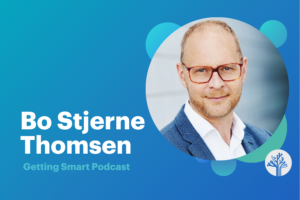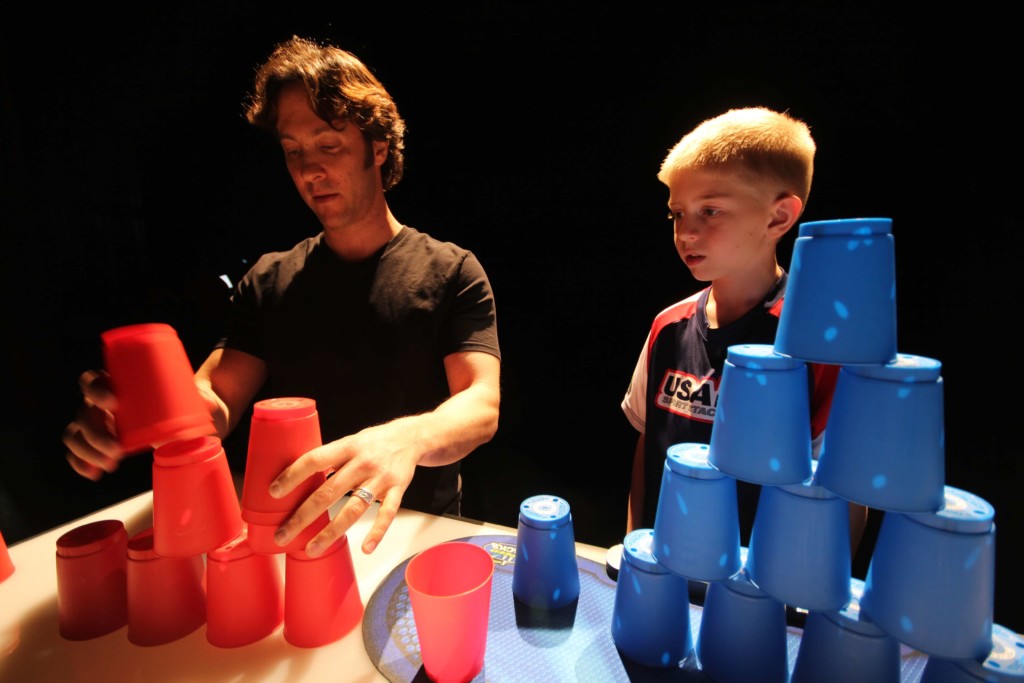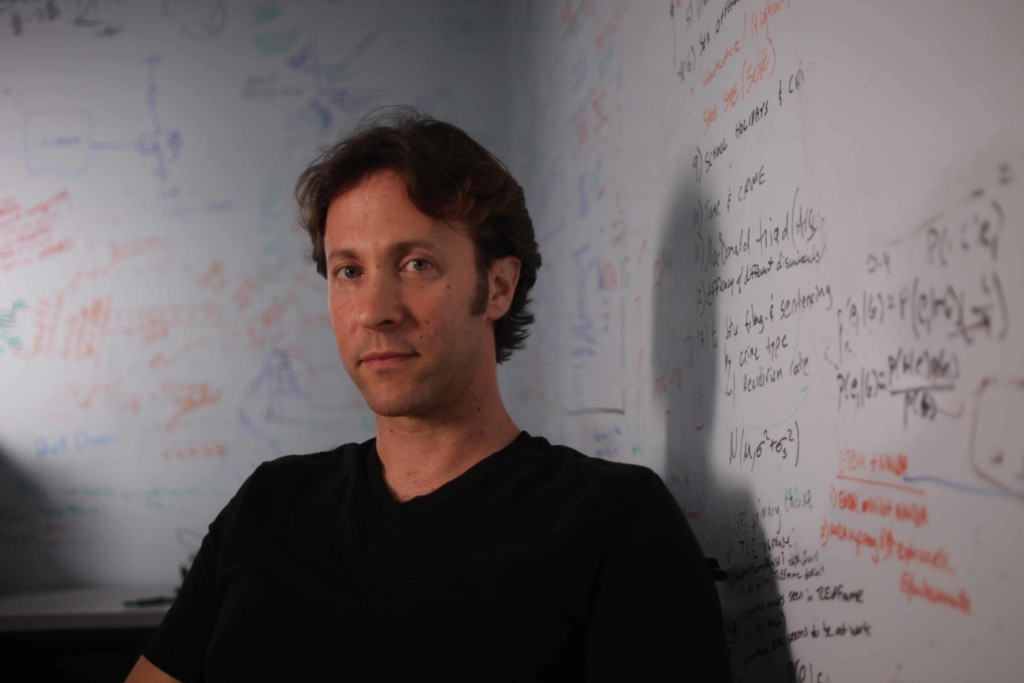We are Wired to Learn, Change and Engage: The Brain with Dr. David Eagleman

Understanding how we learn and the science behind the brain influences the types of systems we create (think: schools and organizations), and the conversations we have with our students, our children and one another.
Consider this: If a child does not have a nurturing and supportive environment during his or her first two years, there are profound effects on the young brain that can last a lifetime.
If you are a brain science junky (or need an entry point to become one), the new PBS Show The Brain With Dr. David Eagleman is exactly what you have been waiting for. The six one hour episodes share the “inner workings of the brain, taking viewers on a visual journey into why they feel and think the things they do.” The show is hosted by Dr. David Eagleman, neuroscientist, New York Times best-selling author and a Guggenheim Fellow.
Eagleman tells the human story of the brain by blending neuroscience and storytelling with visual effects. (And because I had a sneaky preview, I can say that the visual effects are amazing). PBS said:
“With barely a brain scanner or a white coat in sight, THE BRAIN focuses on understanding the fundamental truths of what it means to be human now and in the coming centuries, while communicating these elegant and simple ideas as they apply to us and our experiences.”
The series explores the neural landscape by answering and contextualizing questions on why we’re driven to certain behaviors, why we seek individuality, and “what is reality?”
Neuroplasticity Means We Are Always Changing
Neuroplasticity is defined as, “changes in neural pathways and synapses due to changes in behavior, environment, neural processes, thinking, and emotions – as well as to changes resulting from bodily injury. The concept of neuroplasticity has replaced the formerly-held position that the brain is a physiologically static organ, and explores how – and in which ways – the brain changes in the course of a lifetime.”
Anyone who works with children and/or has children has probably seen this in action. When asked what parents need to know about young brains, Dr. Eagleman said, “One of my big interests is in neuroplasticity. Brains are rewriting themselves all the time. As a parent, this both terrifies me and liberates me. Every single thing I am doing next is shaping their brain and crafting who they are and who they have the capacity to become. It’s a lot of responsibility. There is a deep complexity of the system and my job is to be a good parent. The best a parent can do is open doors and make sure all the educational opportunities are there.”
Dr. Eagleman also added that the brain arrives in the world unfinished, and the job of experience is to further wire the brain. Our children’s brains of course need love and a nurturing environment. In the episode I watched prior to our interview, titled “What Makes Me”, I saw the story of young Romanian children who were living in an orphanage and had very little interaction with adults. When the children were finally adopted at the age of four, the long lasting impact of neglect and little language has impacted their ability to learn throughout their lives (those children are now adults living in the United States, and their story is profiled in the series).
Digital Natives Expect to Engage
Dr. Eagleman and I discussed the impact that technological change is having on the brain, and particularly on young learners. This is of interest to me because of my own children and also because of the changes that are happening (and more that needs to happen) to change the ways we engage with our young people in learning. Dr. Eagleman said, “We are in a rapidly changing moment in time because of digital natives. Educators have to understand that with this next generation they are used to [a fast] pace and interactive learning,” Children who cannot pay attention in class in a typical “sit and get” environment do not necessarily have ADHD. In fact, they simply have a different set of expectations for how they learn.
Activate Interests to Learn
So, the ways in which we are learning are rapidly changing, and the most significant impact may be on digital natives, loosely defined as children born in the age of digital technology. By 2020, Mark Anderson of Strategic News Corporation and technology enthusiast, futurist and advisor to major businesses and philanthropists, predicts most people will be connected and coined the term AORTA (Always On RealTime Access).
I asked Dr. Eagleman what the pace of technological change means for learnings. He said, “Teachers are in a position to make learning interactive and engaging. This is a much better way for the brain to learn and discover by interaction. We are good with young children, but by the time we get to older kids- we expect kids to listen to powerpoint lessons. What the brain fundamentally wants and especially in this generation is to learn by exploration, to solve problems that are engaging and interesting to them.”
When explaining the science behind learning, Dr. Eagleman said, “What’s happening in the brain, so it learns something and remembers something — you need a particular cocktail of chemicals and neurotransmitters. This observation goes back to the ancient Greeks. The highest level of learning is when you are curious about something. Curiosity about something equals those chemicals being present. So, in order to have kids learn whatever topic you are trying to teach they have to be wrapped in a way to engage and create curiosity. Stories and narrative and that’s always an effective technique, interact and pose questions and solve something that is mysterious and interesting.”
Technology Can Make Us Smarter
On the role technology can play in learning and the brain, Dr. Eagleman remarked that he’s a cyper optimist. He cited Ted Talks, Wikipedia and adaptive learning software that create the potential for this next generation to be smarter. “There’s a million ways that you can have interactive knowledge– graph, slider bars, interacting w/ the data. This is the kind of thing that previous generations didn’t had the opportunity to do. We all had ‘just in case’ education- we learned all kinds of things; now we have ‘just in time’ education- which is very fruitful. Students now can have a higher level of engagement when an answer comes in context with the questions. The answer comes right away–it’s coming at the right time while they’re are curious about their topic.”
For more on learning science, see:
- The Teenage Brain: Scaffolding the Brain for Lifelong Learning
- The Teaching Brain and the Science Behind Great Teaching
- Is it a Teaching Problem or a Design Problem?
Tweet your favorite quote from Dr. Eagleman @DavidEagleman and #TheBrain and share with us @Getting_Smart. The Brain with David Eagleman premieres in October on PBS Stations. Check your local listings and follow on Twitter @DavidEagleman and @PBS.
Stay in-the-know with all things EdTech and innovations in learning by signing up to receive the weekly Smart Update.








0 Comments
Leave a Comment
Your email address will not be published. All fields are required.